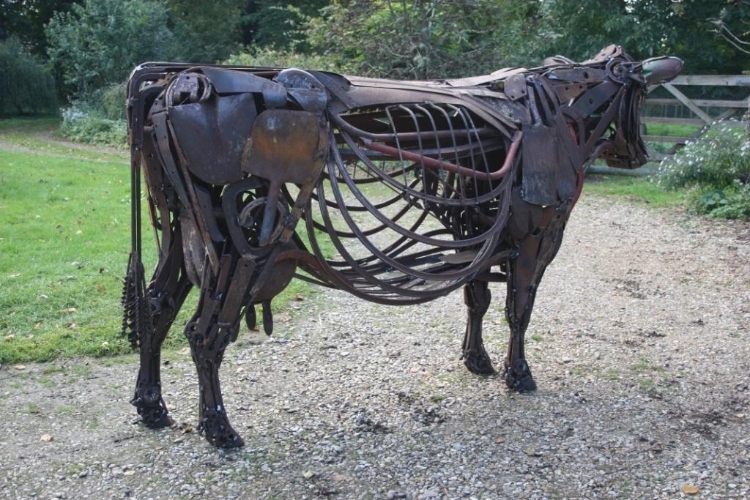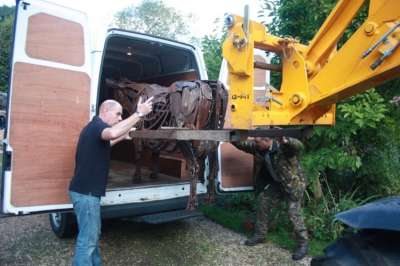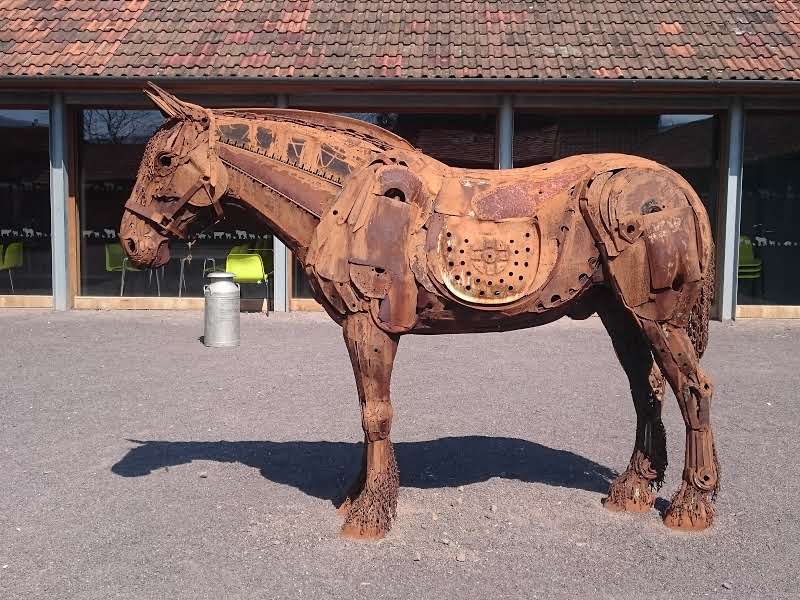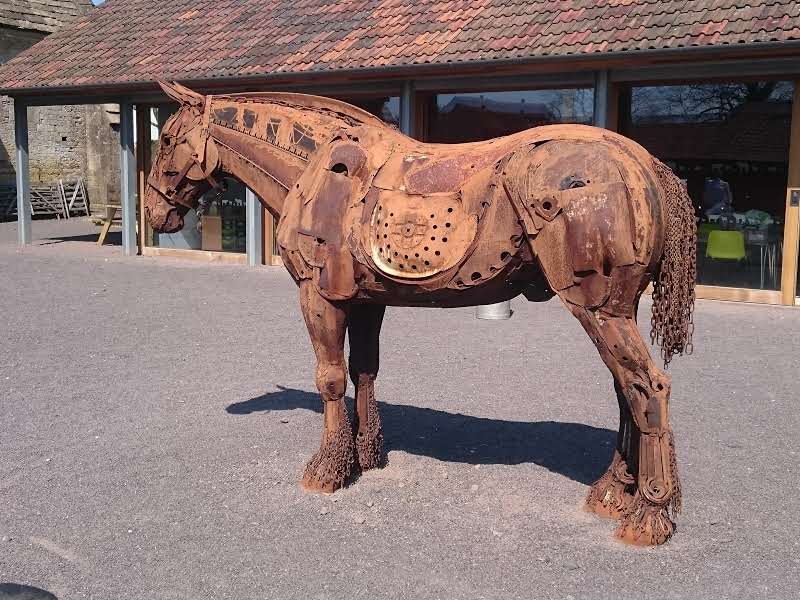In 2012 I was commissioned to make a life sized Irish Moiled Cow for a museum in Dungannon, Northern Ireland. The sculpture is the biggest ‘found object’ sculpture that I have made to date and proved quite a challenge. Nicknamed Stanley due to the brand stamp on an old plane blade that I used on the forehead it used a serious amount of my stock of old tools and agricultural scrap.
Some of the items that I particularly enjoyed placing were the adjustable spanners for teets, old scoop from a set of grocers scales and shovels for the udder and the auger bits for the tail. There are all kinds of blades within the work which seemed very appropriate as cows cut/eat so much grass. Among others there were sickles, scythes, mower blades, saw blades, a brushcutter blade, reciprocal blades from combine harvesters and sheers.

The main bulk of the belly was made using the prongs from a very old hay tedder that may even have been a horse drawn one. A friend of a friend was dismantling it so my sharp eyed friend asked if he could give it to me. It proved utterly invaluable in depicting the cow and emphasizing the bulk of the body. Many people would have tried to fill in the body work but I think your eye does it for you. I often think of cows as being a giant hammock of belly slung between two points and the sculpture reflects that. The hint of the rib cage is portrayed with a pair of old beet forks. Rather than beet forks from east Anglia it would have been lovely to have used potato forks from Northern Ireland. I did look in to sourcing scrap from around Dungannon but it proved impractical. I hope to be able to make another piece for the museum in the future so making a smaller piece in a borrowed workshop on site would be a perfect way to do so.

The sculpture had to get to Northern Ireland from Norfolk so I enlisted the help of friends who had access to an impressive and very new looking loader to get it into the hire van. I am so grateful to all my long suffering network of friends who come to my aid when these pieces need moving.

